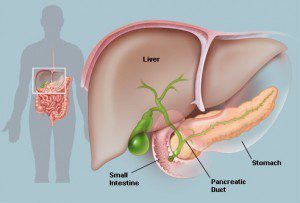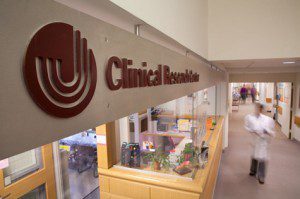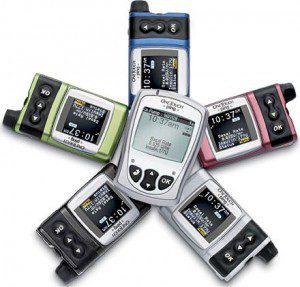 A high-tech diabetic safety service may soon use text messages to notify paramedics if a patient’s blood sugar levels dip too low. The program is being developed by researchers at Swansea University in Wales and scientists hope it reduce costs for the National Health Service in addition to saving the lives of diabetics.
A high-tech diabetic safety service may soon use text messages to notify paramedics if a patient’s blood sugar levels dip too low. The program is being developed by researchers at Swansea University in Wales and scientists hope it reduce costs for the National Health Service in addition to saving the lives of diabetics.
The team at Swansea has been working with various technology firms to create the new generation of blood glucose sensors, an important piece of equipment for diabetics.
The new project aims to develop a notification service that will notify family members or medical personnel via text message when a monitoring unit detects that the patient is experiencing dangerous blood glucose levels.
The monitoring unit would also streamline blood glucose testing for diabetics, making it easier and quicker for them to test their levels throughout the day. According to Dr. Vincent Teng, a nanoelectronics expert at the Swansea University College of Engineering, the testing system is both pain-free and non-invasive, unlike testing through other methods such as pricking fingers several times a day.
Dr. Teng stressed the importance of implementing a system that can notify health professionals or family members if diabetics faint and are unable to contact emergency services themselves. “Diabetic patients with low blood glucose can become unconscious due to hypoglycaemia and there are many reported incidents where patients who either live or work alone fainted, which can be fatal,” said Dr. Teng. “Therefore, a multi-functional monitoring system is important to manage the glucose level of diabetic patients and to provide warning when the patient is unconscious.”
The primary goal of the research project is to create a “low-cost continuous monitoring system” that integrates blood glucose sensors and mobile networks to ensure that diabetics are never stuck in a situation where their glucose levels drop to dangerous levels but are unable to alert anyone. The project cost £470,000 and was funded by the Welsh Government’s Academic Expertise for Business program, which is backed by the European Union.
The monitoring system would utilize micro-needles, each measuring less than a millimeter in size, that take blood samples from the dermal skin. Utilizing a combination of nanotechnology and wireless communications technology, the system would gather readings and transmit the results to cell phones and then to the National Health Service, passing on the data to the physicians taking care of the patient.
Blood glucose monitoring is important to diabetics for several reasons. Not only does it alert diabetics to possible dangerous blood glucose levels, but it establishes trends in glucose levels that can help diabetics plan their meal and exercise schedules and determine when to take medication. Treatment for dangerous blood glucose levels may include insulin or dietary supplements.
Officials involved in the project say that the system won’t only be useful for diabetics. Once proven effective, it can be adapted to provide monitoring and notification services for patients of other chronic diseases, such as cancer, asthma, and heart disease.
The Welsh Government’s Academic Expertise for Business program funded the project. The program uses European Union convergence funding to work with Wales’ academic institutions, utilizing their knowledge, facilities and expertise to promote positive economic gains for Wales. Also known as A4B, the Academic Expertise for Business program will last six years and will provide £70 million in total funding for partnerships between higher and further learning institutions and the business community.
 A research team lead by Professor Ulf Ahlgren and his colleagues is at the forefront of the development of optical projection tomography. Based in Umeå University in Sweden, the team has used this emerging technology to describe embryonic development of the pancreas and the distribution of the islets of Langerhans in the adult pancreas. The team’s findings will aid future research that utilizes modeling of human organs in treating diabetes.
A research team lead by Professor Ulf Ahlgren and his colleagues is at the forefront of the development of optical projection tomography. Based in Umeå University in Sweden, the team has used this emerging technology to describe embryonic development of the pancreas and the distribution of the islets of Langerhans in the adult pancreas. The team’s findings will aid future research that utilizes modeling of human organs in treating diabetes. A position statement released by the Endocrine Society supports the use of central institutional review boards to encourage progress in clinical research and streamline regulatory review in multicenter trials.
A position statement released by the Endocrine Society supports the use of central institutional review boards to encourage progress in clinical research and streamline regulatory review in multicenter trials. This September, schools and moms will have a little more incentive to give their children flavored milks: according to the Milk Processor Education Program, that’s when calories and sugar will be reduced in these kid-favorite flavored milks.
This September, schools and moms will have a little more incentive to give their children flavored milks: according to the Milk Processor Education Program, that’s when calories and sugar will be reduced in these kid-favorite flavored milks. Software developer drchrono recently made waves when it released an electronic health care management app for the iPad, which then received ONC-ATCB certification. Now the developer has continued its work in the mobile space, releasing an iOS app designed to replace paper-based patient check-ins at physicians’’ offices.
Software developer drchrono recently made waves when it released an electronic health care management app for the iPad, which then received ONC-ATCB certification. Now the developer has continued its work in the mobile space, releasing an iOS app designed to replace paper-based patient check-ins at physicians’’ offices. A research team at the Joslin Diabetes Center has discovered that an enzyme located in cell mitochondria is less common in the skeletal muscle of diabetes. The discovery could pave the way for the development of
A research team at the Joslin Diabetes Center has discovered that an enzyme located in cell mitochondria is less common in the skeletal muscle of diabetes. The discovery could pave the way for the development of  According San Antonio Heart Study’s latest paper, published in the Annals of Epidemiology, diabetes is more deadly in Mexican Americans than in Anglos. And for diabetics who live in Mexico, their chances are even worse.
According San Antonio Heart Study’s latest paper, published in the Annals of Epidemiology, diabetes is more deadly in Mexican Americans than in Anglos. And for diabetics who live in Mexico, their chances are even worse. Diabetics may need to pay careful attention to their
Diabetics may need to pay careful attention to their  It’s not often that a “wonder drug” appears, claiming to cure a range of diseases and
It’s not often that a “wonder drug” appears, claiming to cure a range of diseases and  Young adulthood is a time when most people are less concerned about their weight. Their metabolisms are still relatively fast, they may be more active, and they haven’t encountered physical problems that prevent them from getting regular exercise. Yet obesity is a problem for young adults just as much as their elders, and researchers have found that it may be hurting them in more than just the mirror; a high body mass index raises an individual’s chance of dying early by 21%, while those who maintain healthy weights at age 25 are more likely to live longer and healthier lives.
Young adulthood is a time when most people are less concerned about their weight. Their metabolisms are still relatively fast, they may be more active, and they haven’t encountered physical problems that prevent them from getting regular exercise. Yet obesity is a problem for young adults just as much as their elders, and researchers have found that it may be hurting them in more than just the mirror; a high body mass index raises an individual’s chance of dying early by 21%, while those who maintain healthy weights at age 25 are more likely to live longer and healthier lives.